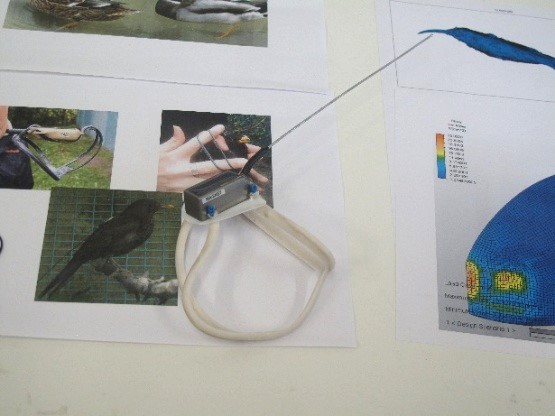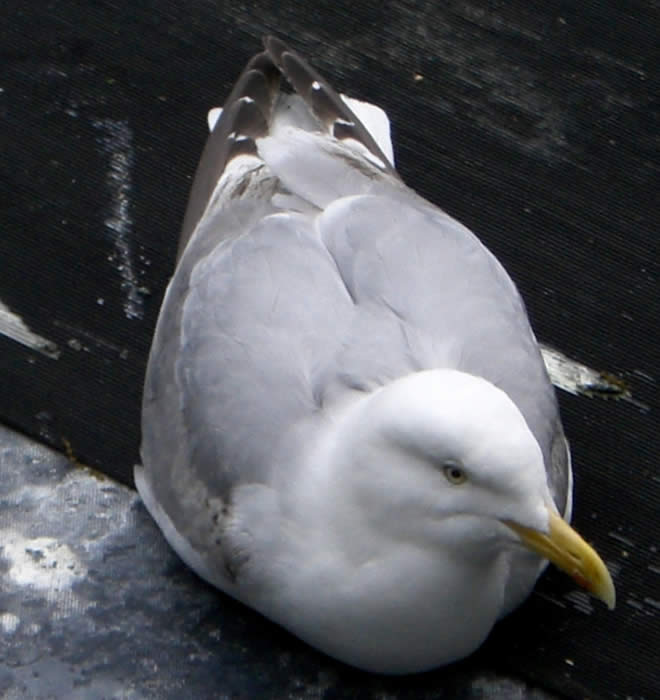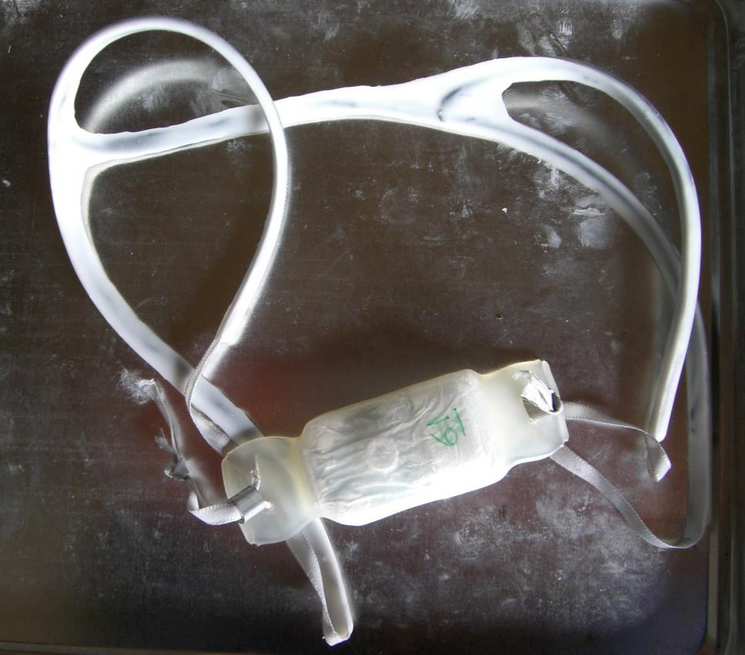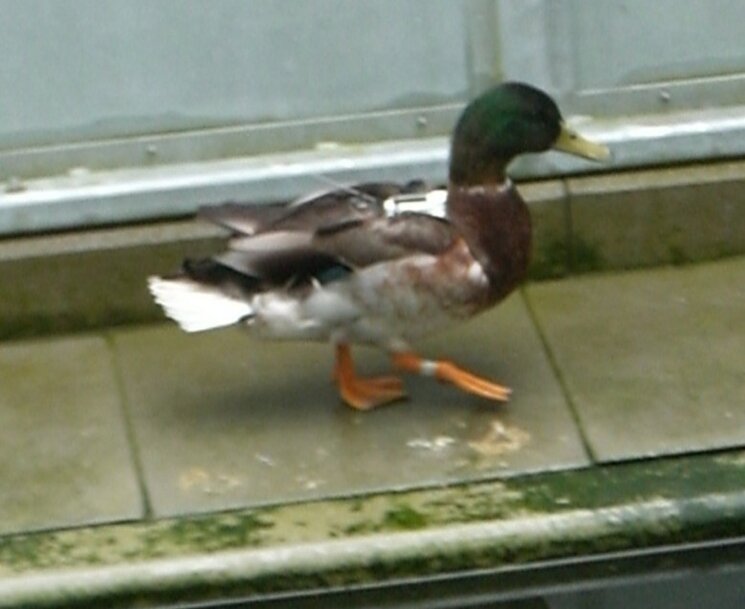Winner 2013
SLAM, 2013 R&D Award Winner
Development of a novel 'back-pack' system to track rehabilitated oiled birds without compromising their well-being.
Swansea Laboratory for Animal Movement (SLAM) is based in Wales. The Award is used to fund a 1-year post-doctoral study finishing in September 2014.
Who is the lead organisation?
Swansea Laboratory for Animal Movement (SLAM), Swansea University, UK.
SLAM is a group of experts specialised in animal tracking using state-of-the-art technology. For years this team has undertaken cutting-edge research on topics ranging from the mechanics of locomotion to the foraging behaviour of both marine and terrestrial animals using key concepts in animal biology and ecology. As part of an inter-disciplinary institute, the group uses essential facilities and equipment from a wind tunnel and 3D printers owned by the Engineering Department, to a unique fully equipped imaging laboratory especially designed for analysis and visualisation of detailed animal movements and behavioural data. Solid partnerships have been built over the years with internationally recognised organisations including the Royal Society for the Prevention of Cruelty to Animals (RSPCA), the Oiled Wildlife Care Network (OWCN) and the Max Planck Institute (German institute leader in animal tracking).
Why did ITOPF decide to fund this research?
The R&D Award Committee recognised that currently, obtaining information about the behaviour of rehabilitated birds after their release is challenging. Despite many years of study in this area, there is still an urgent need to determine the real success of damage minimisation efforts.
This project aims to develop a suitable tracking method to measure this success by assessing the survival of rehabilitated oiled seabirds. The main issue, however, is that survival rates can only be determined through long term studies and no reliable attachment systems currently exist to allow such studies to be performed without potentially affecting the birds. It is therefore paramount to ensure that a system can be designed to reliably track and assess the survival rate of seabirds without impacting on their welfare.
If a system can be designed that enables electronic devices to be attached to wild birds without affecting their normal behaviour, this would increase the possibility of obtaining more reliable and meaningful post-release data. In the future, such a system could allow better data banks of information to be established, which could then be used to make informed decisions about the benefits or otherwise of rehabilitating certain bird species following an oil spill.
The project already has a strong foundation, with a doctoral thesis and several papers already published in key journals.
What are the background and objectives of this project?
Since their introduction several decades ago, tracking systems have undergone continuous evolution. For birds, the current short-term tagging method fixes a VHF tag on a bird’s feathers. Normally this tag is lost quickly (within a few days or weeks). Because these tags have a relatively low range, they have to be tracked over a short distance between the tagged bird and the receiver, for example from an aircraft. The other common method attaches passive rings on the leg of the bird. However, this technique does not give information on bird behaviour after rehabilitation and results are dependent on the re-sighting/recapture of the bird. Owing to the shortcomings of these techniques, satellite tagging has become the state of the art tracking system. Indeed, information on bird behaviour does not need to be manually retrieved but is directly transmitted in real time, for as long as the tracking device remains on the bird and functional.
This proposal is the continuation of a 3-year doctoral study which involved the development of a novel minimal-impact system to track rehabilitated oiled birds in the wild. The success of the project depends on the team’s ability to ensure that a system can be designed to attach devices to birds over long-term periods without compromising animal wellbeing.
A new silicone-based harness to attach tags (i.e. electronic devices used to monitor animals such as GPS, VHF transmitters etc.) to birds has been successfully tested in captivity on a variety of species and is now ready to be used on wild birds as proof of concept. With respect to assessing the birds’ reaction to the equipment (i.e. harness plus tracking unit), direct observations will be carried out on a regular basis to look for behavioural abnormalities. In addition, the birds will be wearing accelerometers which will provide information on their behaviour and physiology (e.g. assess their energy expenditure to check if the individuals have to work harder with the equipment).
1. Fabrication process
The project aims to improve the fabrication process of the new harness. Using Computer-Aided Design and 3D printing, the team has been able to produce bespoke harnesses of various designs and sizes. With the range of harnesses now available, it enables most species to be fitted with a harness adapted to their morphology and lifestyle.
2. Bird reaction to the harness
As a proof of concept, the harness system is tested on various seabird species in captivity and in the wild. Since March 2013, some tests have already been conducted with rather promising results:
Trials on captive guillemots (Uria aalge) at the RSPCA centre in Taunton (UK) have helped the team design a thinner version of the harness that is more suitable for diving birds.
Tests on gull species (Larus fuscus, Larus argentatus and Larus marinus) at sites around the Baltic Sea have led to further improvements of the harness design and fabrication.
A study on northern gannets (Morus bassanus) in the English Channel has led to the successful deployment of GPS units using the harness as a method of attachment for a test period of 1 to 2 days.
Wild ruffs (Philomachus pugnax) and red knots (Calidris canutus) were kept in captivity at the NIOZ Royal Netherlands Institute for Sea Research facilities (Texel Island, Netherlands) to test various harness designs and determine which would be best. These species can double their weight prior to migration and therefore one essential criterion was that the harness should allow the birds to put on weight without causing any restraint and potential injury.
Trials on wild European shags (Phalacrocorax aristotelis) will take place in June 2014 at the Isle of May in Scotland. If these initial tests provide satisfactory results, this should lead to some long-term deployment of satellite tags on this species (i.e. one year before next breeding season).
The intended tests on western grebes (Aechmophorus occidentalis) and common guillemots at the Oiled Wildlife Care Network facilities in California could not take place this year and have been delayed until January 2015.
Winners from previous years


effects on waterproofing

gannet.

